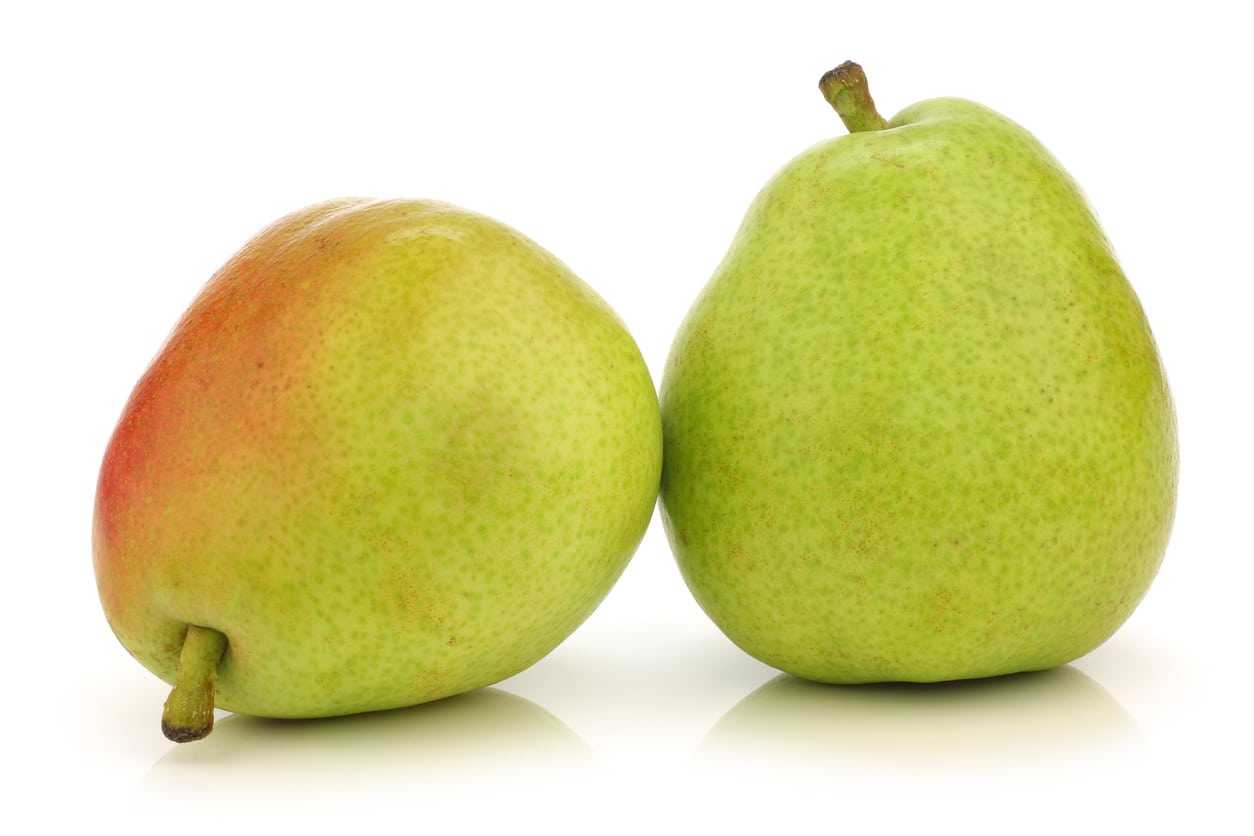Growing Green Anjous – How To Care For Green Anjou Pears


Also known as d’Anjou, Green Anjou pear trees originated in France or Belgium in the early nineteenth century and were introduced to North America in 1842. Since that time, the Green Anjou pear variety has become a favorite of professional growers and home gardeners alike. If you live in USDA plant hardiness zones 5 through 9, you can easily grow Green Anjou pear trees in your own garden. Let’s learn how.
Green Anjou Pear Info
Green Anjou pears are sweet, juicy, mild pears with a hint of citrus. The perfect all-purpose pear tree, Green Anjou is delicious eaten fresh but holds up well to roasting, baking, poaching, grilling, or canning. Unlike most pears that change color as they ripen, Green Anjou pear variety may take on a very slight hint of yellow when it ripens, but the attractive green color generally remains unchanged.
Growing Green Anjous
Use the following tips when you care for Green Anjou pears in the home landscape: Plant Green Anjou pear trees any time the ground is workable in late winter or early spring. Like all pears, Green Anjou pear variety requires full sunlight and fertile, well-drained soil. Dig in a generous amount of compost or well-rotted manure to improve soil quality. Green Anjou pear trees require at least one other pear tree within 50 feet (15 m.) for adequate pollination. Good pollinators for Green Anjou pear variety include Bosc, Seckel, or Bartlett. Water young pear trees regularly the first year. Thereafter, water deeply during hot, dry spells. Avoid overwatering, as pear trees don’t appreciate wet feet. Feed pear trees every spring, beginning when the trees are about four to six years old or when they begin bearing fruit. Use a small amount of an all-purpose fertilizer. Avoid high-nitrogen fertilizers, which will weaken the tree and make it more susceptible to pests and disease. Prune the pear trees every year in late winter or early spring to keep the tree healthy and productive. Thin the canopy to improve air circulation. Remove dead and damaged growth, or branches that rub or cross other branches. Thin young Green Anjou pear trees when the pears are smaller than a dime. Otherwise, the tree may produce more fruit than the branches can support without breaking. Thinning pears also produces larger fruit. Treat aphids or mites with insecticidal soap spray or neem oil. Green Anjou are late-blooming pears, generally ready for harvest in late September. Place the pears on your kitchen counter and they will ripen in a couple of days.
Gardening tips, videos, info and more delivered right to your inbox!
Sign up for the Gardening Know How newsletter today and receive a free copy of our e-book "How to Grow Delicious Tomatoes".

A Credentialed Garden Writer, Mary H. Dyer was with Gardening Know How in the very beginning, publishing articles as early as 2007.
-
 Looking For Plants To Give You The Soft And Fuzzies? Try These 5 Fuzzy Leaf Plant Options
Looking For Plants To Give You The Soft And Fuzzies? Try These 5 Fuzzy Leaf Plant OptionsLovers of texture, drama, silver foliage and tactile plants will adore these special sensory garden additions. These fuzzy leaf plant options will leave you all aglow
By Susan Albert
-
 Get Ready For A Summer Of Hummers! Grow These Full Sun Hummingbird Plants and Flowers
Get Ready For A Summer Of Hummers! Grow These Full Sun Hummingbird Plants and FlowersIf you’re lucky enough to enjoy a sunny backyard, make sure you are maxing out on your pollinator opportunities and grow these full sun hummingbird plants and flowers
By Tonya Barnett